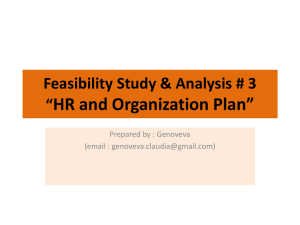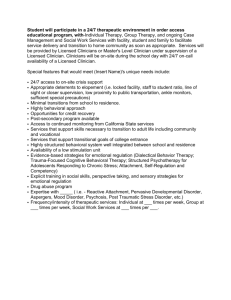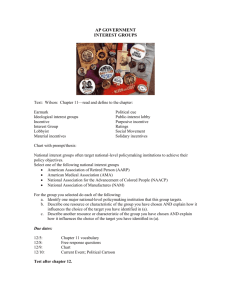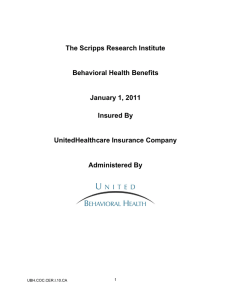Identifying Effective Clinician Incentives to Improve Depression Care
advertisement
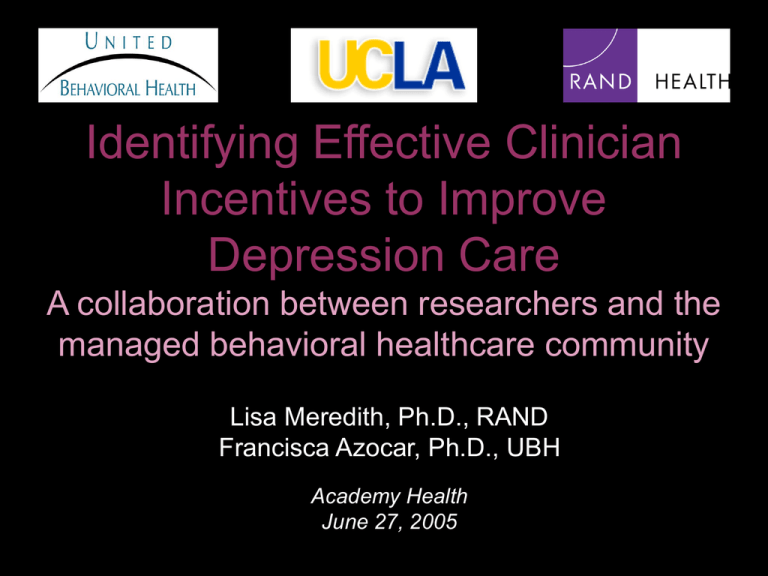
Identifying Effective Clinician Incentives to Improve Depression Care A collaboration between researchers and the managed behavioral healthcare community Lisa Meredith, Ph.D., RAND Francisca Azocar, Ph.D., UBH Academy Health June 27, 2005 Community Partnership United Behavioral Health (UBH) – One of the largest managed behavioral health organization (MBHO) in the country • Serving 1,700 customers and approximately 24 million members nationwide • Our customers are large and small employers from different industries, health plans and public sector entities • Both our Employer Division and Health Plan Division and Public Sector are served by 7 care management centers in different regions of the country • UBH service products include EAP, behavioral health, and disability services – A national provider network with over 62,000 clinicians representing • Multiple specialties – 7,500 psychiatrist; 13,400 psychologists;24,400 master’s level counselors; 530 psychiatric nurses • 2,500 facilities with locations in every state Collaborators and Funding United Behavioral Health (UBH) • Francisca Azocar, Ph.D. • Joyce McCulloch, M.S. • Robert Branstrom, Ph.D. RAND Corporation (RAND) • Lisa S. Meredith, Ph.D • Michael Schoenbaum, Ph.D. University of California, Los Angeles (UCLA) • Susan Ettner, Ph.D. • Mindy Morefield, M.A. Supported by NIMH grant #P30 MH 068639 to Dr. Kenneth B. Wells Can incentives influence evidence-based care for depression in a MBHO? • Gap between evidence-based practice and health care as typically practiced in the real world (“Quality Chasm” report: IOM, 2001) • Changing the behaviors/practices of clinicians can increase evidence-based care • Little is known about efficient and generalizable strategies for motivating clinicians to adopt evidencebased care • No work on use of incentives with mental health specialists – only primary care (RWJF) • This project builds on and complements primary care incentive demonstrations Clinician Incentives Pilot Development Plan Task Goals 1. Identify potential (modifiable) clinician behaviors. 2. Understand how each behavior will improve care for depression (potential impact of change, pros and cons, sustainability for behavior change). Round #1 Interviews Timing Dec 04/Mar 05 (Research team picks 5 behaviors with most potential) 1. Identify incentives to clinician behavior change (pros and cons, impact, and sustainability). 2. Query experiences with the incentive structures including consequences to implementation. Round #2 Interviews May/June 2005 (Research team generates list of provider/incentive packages) Administrator Interviews 1. Assess real-time feasibility of packages. 2. Explore ability of databases to support intervention. 3. Determine if reliable quality indicators can be constructed from existing claims and drug data. June and Nov 2005 (Research team conducts analysis to assess tracking capability) Consensus Panel 1. Present top 5 options and elicit feedback. 2. Engage group in discussion of behavior/incentive pairs to pick most viable option. Pilot Study to determine feasibility Sep/Oct 2005 Stakeholder Characteristics (N=14) Characteristic Type UBH Administrator* Other Administrator# Psychiatrist Psychologist Masters-level therapist Gender Male Female N 4 3 1 2 4 6 8 *Includes 1 administrator, 2 quality/clinical education specialists, and 1 medical director #Includes 2 benefits consultants, and 1 benefits manager Top 5 Behaviors for Targeting Change Combination Therapy Patient Education Antidepressant Treatment Rapid Access to Care Clinician Education Coordination of Care Longer Treatment Family Involvement Employee-EAP Linkage Psychotherapy 0 2 4 6 Summed Rankings 8 10 12 Results: Types of Incentives Money “more money, … to attract more psychiatrists” “Everyone wants to be paid more.” “You could also give clinicians a bonus if…” Resources “There is a resource issue because of the national shortage of psychiatrists” “Provide educational materials to therapists free of charge” Opportunity “Provide opportunities for clinicians to talk with each other.” “Give the clinician more empowerment” “CEUs—When people feel more informed, then they feel more competent.” Incentives by Behaviors Incentive Combo Therapy Pt Educ AD Tx Rapid Access 1 4 Clin Educ Financial (Money) Increase amount of reimbursement 1 Create new billing code 1 1 Bonus pay for meeting target Pay more for psychiatrists to increase access 2 1 1 CEU-based education (online, face-to-face), training 1 2 Plan provide access to a preferred physician that will do coordinated treatment 1 1 Provide readily available information (free) through plan 1 Non- Financial (Resources and Opportunity) 2 2 1 1 1 Provide feedback on patient outcomes 2 3 1 Reduce patient copay 1 Recognize through an extra credential/autonomy 1 Increase amount of approved sessions 1 Remove authorization requirement 1 Make participation in network contingent on practice 1 1 1 1 Anticipated Challenges • What behavior to incentivize will in part be determined by the clinician’s specialty, how the incentive is structured, measured, and risk adjusted – • Main challenges: – What to incentivize – How to measure it – How to reward the incentive – Sustainability Issues • Large provider panel – – – – 62,000 with individual contracts Solo practice Number of panels Volume of UBH patients/provider • Monitoring & measuring behavior – Claims – Audits – Surveys • Sustainability - After the researchers leave… – Administrative burden is high and yield may be low – Volume of patients per clinician makes the incentive unpredictable decreasing motivation Next Steps • Assess feasibility for using administrative data for each behavior/incentive package – Monitor desired behavior – Provide the required incentives reasonably and inexpensively – Test in real-time through quantitative analyses • Convene consensus panel with 10-12 stakeholders who participated in interviews – Present top 5 “feasible” behavior/incentive packages – Break-out into 5 groups to brainstorm about how to implement each package – Reconvene to report, discuss, and vote on “best” package • Conduct small pilot study to test the intervention at UBH
